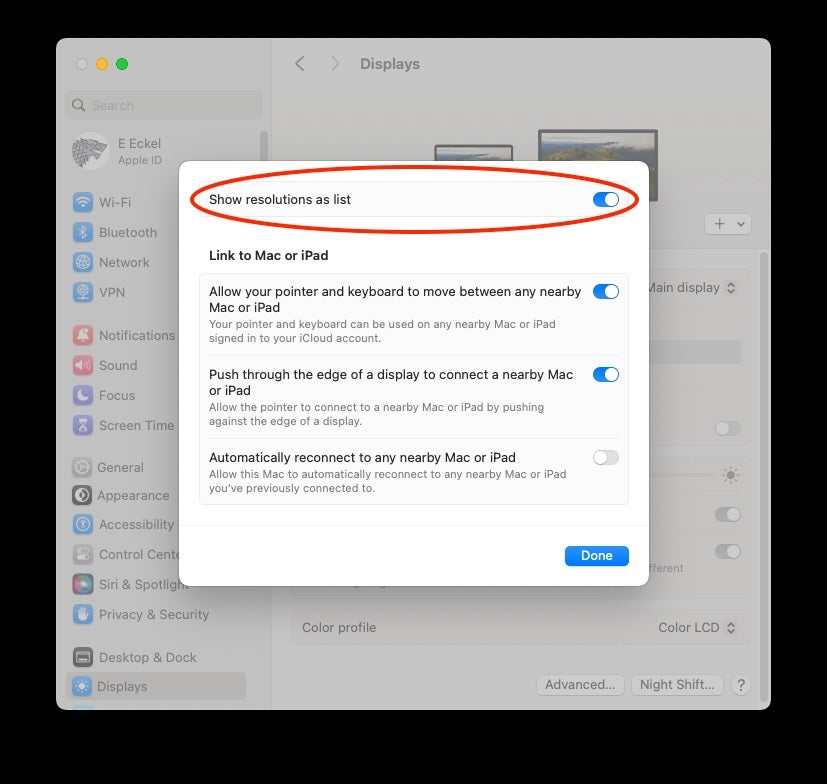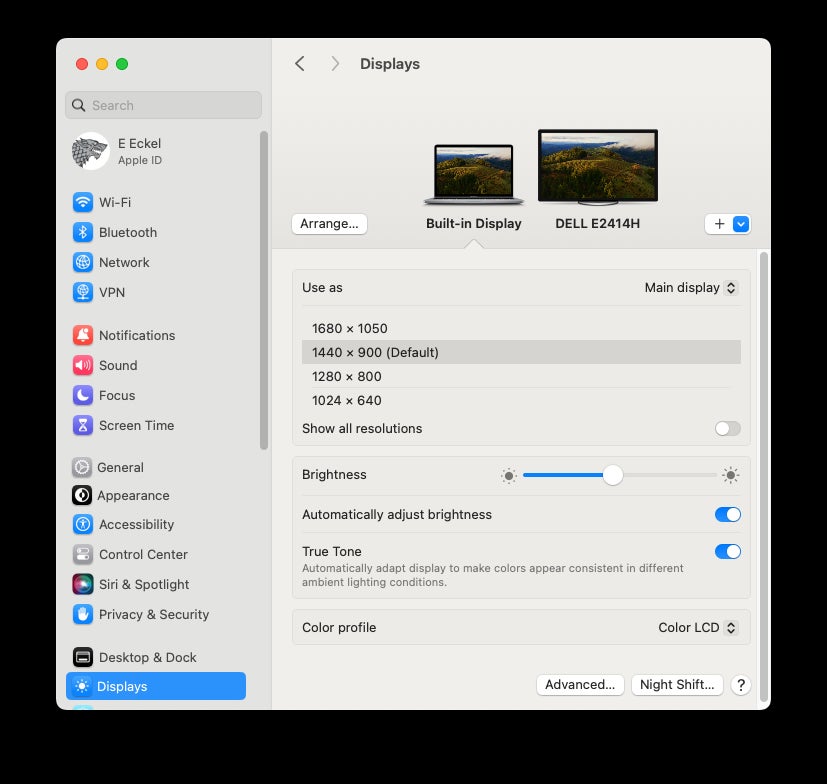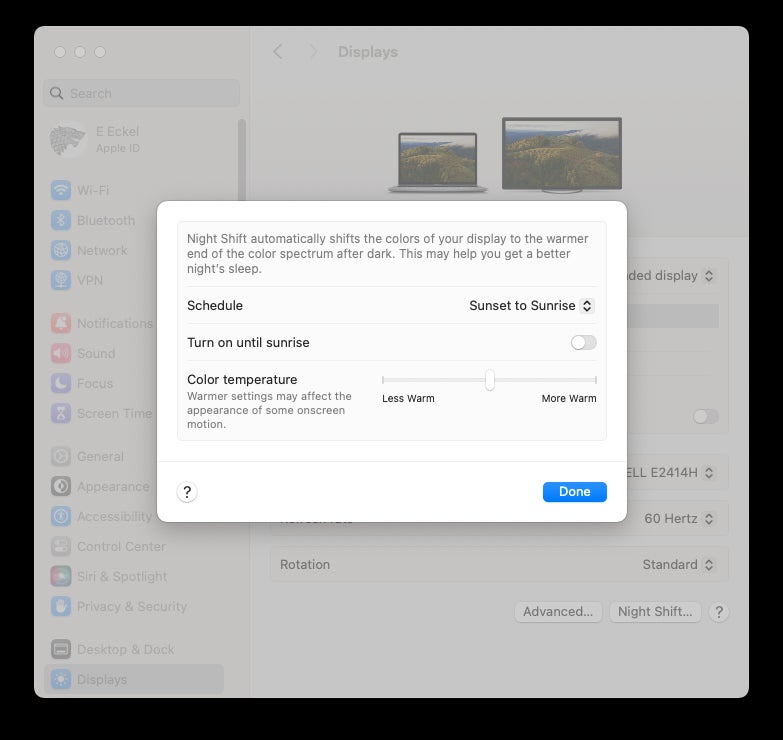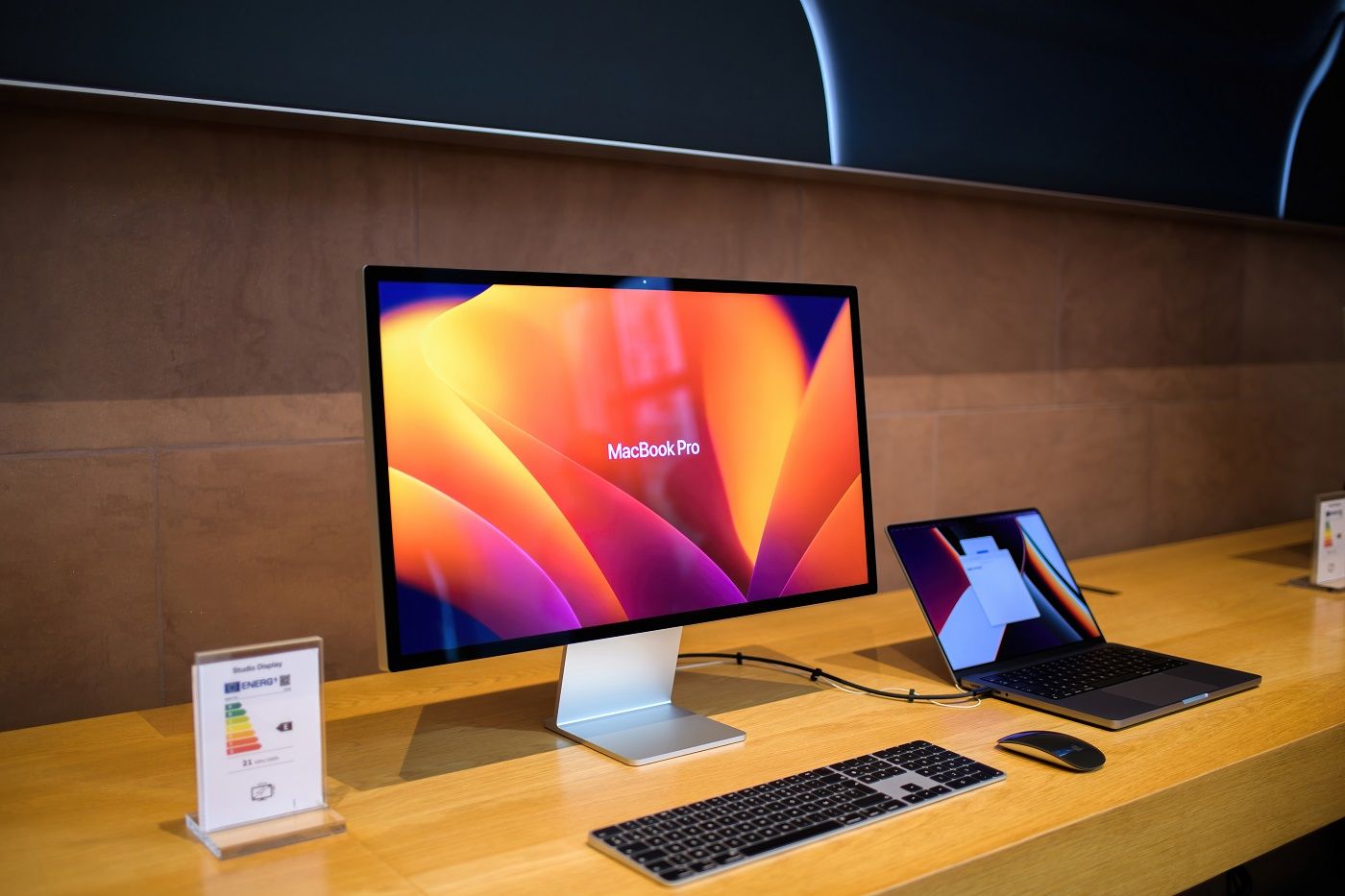Adding a second screen to a Mac is usually a simple task. Simply physically connect an external monitor to an available compatible port on your Mac. Depending on the Mac you’re using, port options may include Thunderbolt/USB 4 (which provides support for USB-C and DisplayPort, among other technologies) and HDMI . To help connect a second screen, many users use a stand or cables.
Once a compatible external monitor is connected, your Mac will automatically detect, recognize, and enable the second display. But macOS default settings and settings may require adjustments to layout options, resolution, refresh rate, and more.
Confirm your Mac’s external display capabilities
If you’re having trouble connecting multiple displays to your Mac (most models support connecting at least one external monitor), confirm the number of external displays your Mac is capable of powering.
SEE: Explore our macOS Sonoma cheat sheet.
For example, an M2-equipped Mac mini can drive up to two displays, one with up to 6K resolution at a 60Hz refresh rate using a Thunderbolt cable and a second monitor with up to 5K resolution at 60Hz using a Thunderbolt. or HDMI connection.
More information about specific versions of macOS and the corresponding compatible monitors, cables, and adapters are available on the Apple website.
Adjust the screen layout
Your Mac can configure the new display as if the second monitor were to the right of your Mac, which means you need to move your mouse to the right on your Mac’s built-in display to get to the second display. But if the external monitor is located to the left of your Mac, that setup won’t work well.
To adjust this, open System Settings by clicking the Apple icon in the Mac menu bar and selecting Displays. The macOS display screen will open (Figure A).
Next, click the Organize button. Using the Arrange Screens screen, you can physically click and drag the screen you want to adjust to its appropriate location (Figure B). In addition to moving the screens left and right, you can update the location of the monitors by moving them up and down. While it may take some experimenting, the feature allows you to arrange displays in a way that allows you to intuitively move your mouse between those monitors.

Adjust resolution and text size
Using the macOS Displays screen, you can adjust the text size of connected displays. Simply highlight the respective monitor and then the preview image that macOS presents will appear. The default options range from Larger Text to More Space, as demonstrated above in Figure A. However, you can also click the Advanced button at the bottom of the menu and enable the Show resolutions as a list option (Figure C).

macOS will then present supported resolution options within the Displays screen (Figure D).

You can explore more options by enabling the Show all resolutions radio button (Figure E). Again, it may take some experimenting to settle on the screen option that best suits your needs for each screen you are using.

Change display function
The Screens menu allows you to adjust how a second screen works. For example, you can click the Use As drop-down menu and, instead of using the default Extended Display option for the second monitor, choose:
- Mirror for Integrated Display to mirror your Mac’s integrated display on the second monitor.
- Main screen to make the second monitor the main one.
Adjust the display color profile
Another display configuration option is color profiles. Selection options frequently include:
- Color LCD screen.
- Mac manufacturer specific display proprietary profiles.
- Generic RGB profile.
Settings allow you to adjust the colors of MacOS displays to help professionals working with specific color matching needs for graphics, images, and videos.
Change refresh rate
Refresh rates are another configuration setting that can be changed. Users who watch and edit videos, for example, may want to specify a higher refresh rate. Higher refresh rates force the display, including an external monitor you have connected to your Mac, to refresh more frequently. The result is a smoother and therefore less blurry video presentation.
Adjust screen orientation
If you need to position a monitor vertically, such as when editing manuscripts using a portrait screen orientation instead of a landscape perspective, for example, you can select the 90-degree option from the screen rotation drop-down menu. The option will change the display settings to update to properly match the screen orientation of the external monitor.
Enable night shift
Reducing blue light, especially at night, is commonly attributed to reducing eye strain and improving sleep. Apple’s Night Shift aims to do just that. The corresponding button appears at the bottom right of the Screens menu. To enable the Night Shift feature, which automatically ensures the monitor adjusts to use warmer spectrum colors and less blue light later in the day, change the Schedule setting to a custom setting you specify or the Sunset To preset. Sunrise (Figure F).

Tips to remember when adding a second Mac display
Adding an external display significantly improves the performance of a Mac. Taking a few minutes to make sure you’ve set up the second monitor how you need it helps optimize the potential of the second display.
Whenever you adjust options for an external display, be sure to first select that monitor within the System Setup Display menu and then proceed to make adjustments. Otherwise, you could accidentally adjust the settings on the wrong screen; in which case, you can always return to the previous settings.
If you’re more interested in working with a second display, you can read about alternative options for connected external displays, including using Duet Display. Alternatively, you can explore using an iPad to extend your macOS desktop using Apple’s Sidecar technology.












